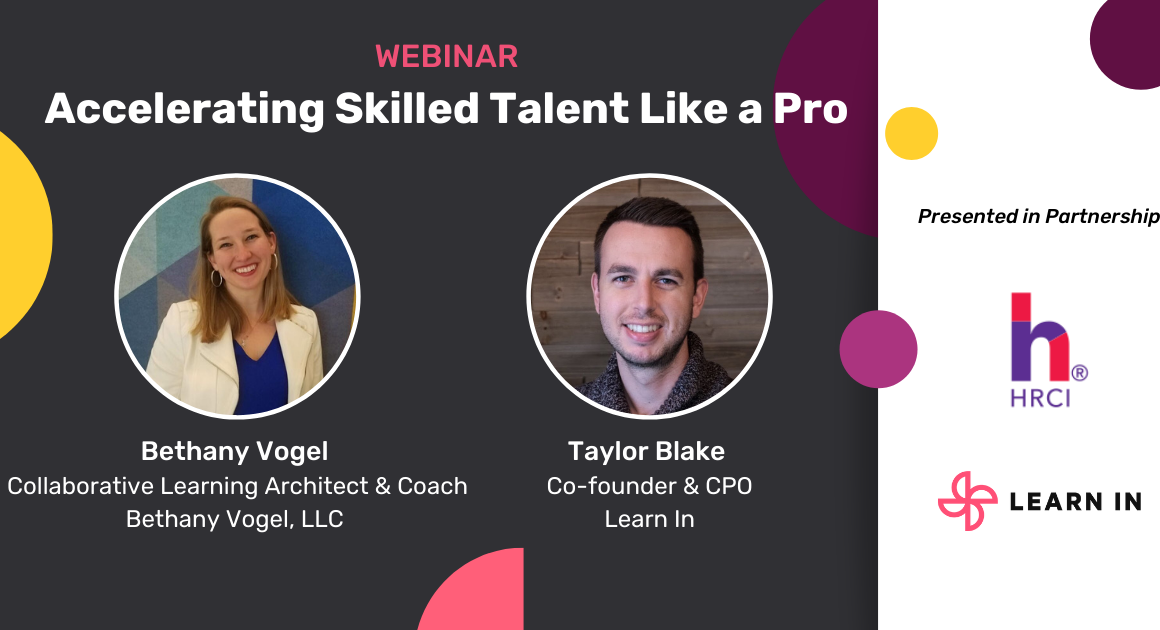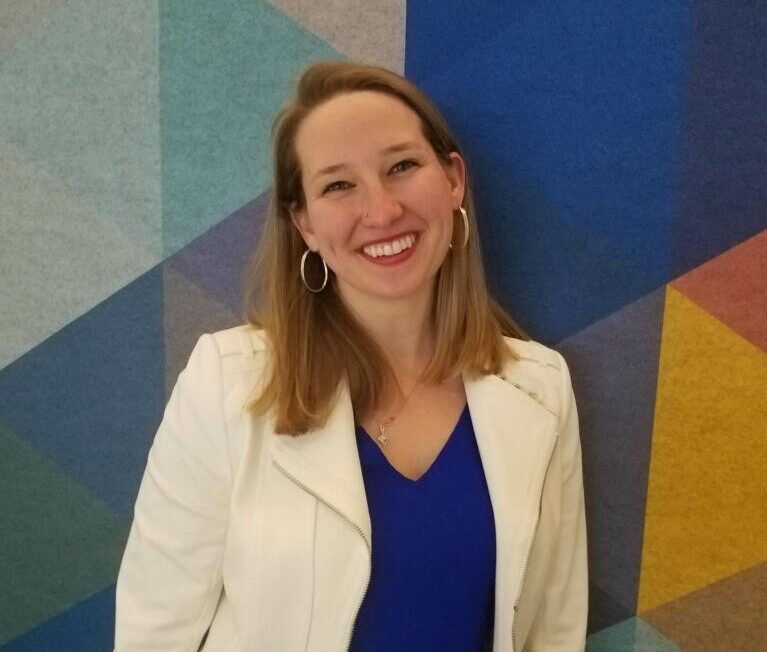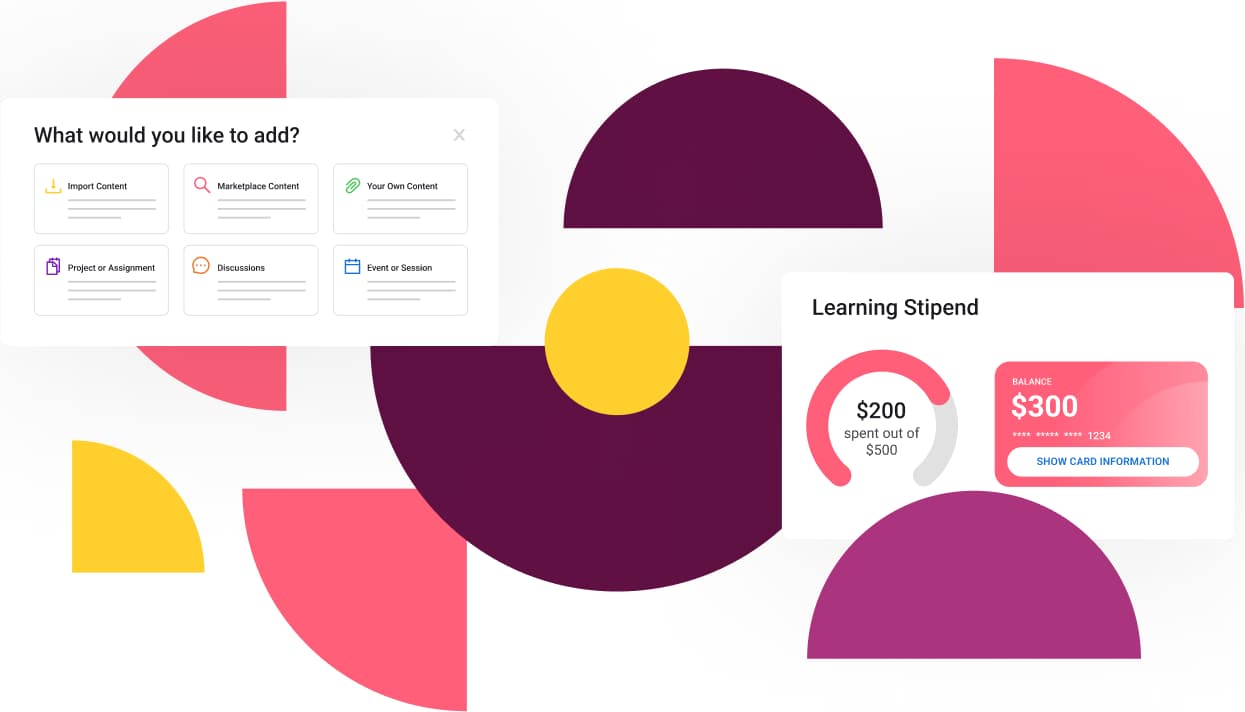Webinar Recap: Accelerating Skilled Talent Like a Pro

We recently partnered with HRCI to deliver a webinar with Taylor Blake, Co-founder and CPO of Learn In, and Bethany Vogel, Collaborative Learning Architect and Coach. It was a lively discussion about how to handle the development of skilled talent in today’s high-pressure environment of the talent wars, increasing skills half-life, hybrid working, equity needs and rapid digitization.
In case you missed it, you can read the recap below, or watch the webinar recording to learn more about the current state of building critical skills. Taylor and Bethany cover topics including the accelerators to deliver skill building programs precisely and at scale, and how to intentionally shift internal resources and sunk investments to achieve immediate results on employee performance.
Topic 1: Getting Aligned on Outcomes
To accelerate skilled talent, you need to know where you’re going, and understand what outcomes you want to achieve. This framework helps to get aligned on the outcomes, because not all learning is the same.
- Training: Focused on tasks and process; Measured by productivity or performance metrics.
- Development: Focused on preparing for new projects, skills, and roles; Measured by bench strength, internal mobility, or key skills.
- Learning: Focused on curiosity, enrichment, and learning culture; Measured by employees feeling engaged and invested in.
There are often different expectations between learning, training, and development. It is important to get alignment between what the employees need, and what the business needs.
To achieve the desired outcomes:
- Ask: Which areas (training, development, or learning) are currently getting the most time right now? Which areas should?
- Explore: What skills does the organization need? What do your employees need or want to learn to do their jobs better today or tomorrow? Where is the intersection between the two?
- Action: Think about outcomes for both the learner and the organization to find the intersection; Open up opportunities for learners to participate in informal, social learning. Talk to learners – especially the highly engaged AND disengaged employees. Ask them what they think they need, and who they’ve been talking to for support.
Topic 2: Leverage Technologies and Brain Science Principles
Just putting content out there will not build a workforce, just like watching a YouTube video about how to unclog a drain will not make you a plumber. Building skills happens over time and includes things like:
- Reflection
- Practice
- Discussion
- Reinforcement
- Mentoring
- Alignment to real work
- Rewards and incentives
Applying the AGES model can help ensure that learning sticks:
- Attention is critical.
- Generating insights takes time.
- Emotions govern.
- Spaced learning Sticks.
Some actionable approaches to try:
- Triggers: Emails, notifications in an app, calendar entries, chatbots, alexa learning moments
- Rewards: Gamification! Community moderation calling out great contributions.
- Ask: What is the journey for a specific upskilling initiative? Where are you using elements of the AGES model? How could you incorporate elements of the AGES model?
Topic 3: Bringing it to life
- Actionable Approach: What is one thing I can do today:
- Take 30 minutes and map out the employee’s journey. Take one of those moments (like “onboarding”) and consider their 5 moments of need. How are these moments of need being met already? What can you remove to create less friction in that moment? What can you add to better support deep, transformational learning?
- What can you do today?
- Focus on authenticity and building trust over perfection
- Explore a mindset of curiosity by conducting experiments
- Find one thing to say “no” to
- Use design thinking to create a learning experience
Creating effective learning experiences is hard, takes time, takes money, takes expertise, takes buy-in from the business. Chances are we aren’t going to have all the resources we’d like. Where the most pressing constraint for L&D used to be buy-in, we’re now seeing that shift to a lack of (or mismanaged) resources.
By focusing on a few key priorities, finding the right amount of structure, developing workarounds for budgetary constraints, and leveraging internal expertise – we can move quicker in developing skilled talent. And always remember: Progress over perfection!
Written By:
About Learn In
Learn In helps companies establish talent academies that steer all the resources needed for building an always-skilled workforce. HR, Talent and L&D leaders use Learn In to modernize access to learning budgets and world-class programs, and to simplify the delivery of custom programs to employee groups. Learn In’s core features include a tuition benefits manager, a prepaid learning stipend card, a world-class program marketplace and custom program builder, and dedicated coaching. Now every employee can build deeper skills precisely aligned to company needs. Co-founded by the founders of Degreed, Learn In is backed by leading edtech & future-of-work investors, including Firework Ventures, Kickstart Fund, GSV, Album, and Village Global, and has been covered in CNBC, USA Today, EdTechReview, EdSurge, and Techcrunch.
For more insights, follow us on LinkedIn, or subscribe to our newsletter to stay in touch.


